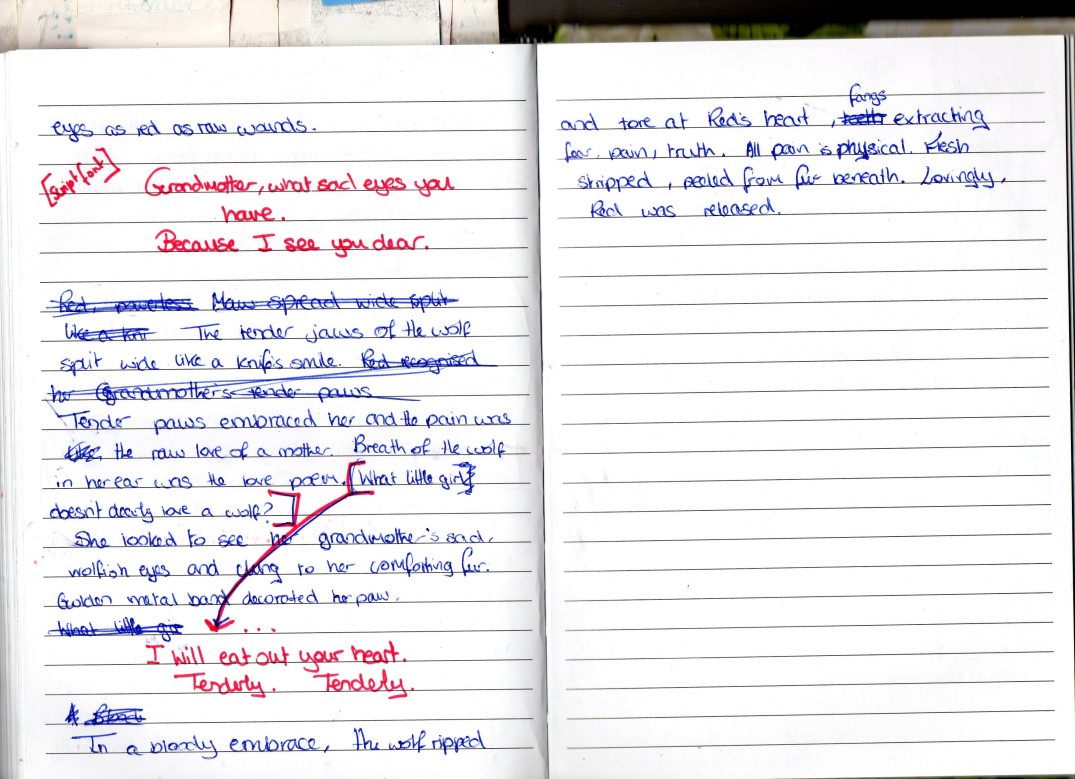
Then I became anxious: I was walking into a forest. All of me that was down below was thrashing: I might never know sleep again. (pg.11, Pussycat Fever)
I asked myself very honestly, “Bad Dog, why aren’t you attracted to a man?” I really wanted to be because I was supposed to be. (pg.21, Pussycat Fever)
To her, every word wasn’t only material in itself,
but also sent out like beacons, other words. _Blue_
sent out _heaven_ and _The Virgin_. Material is rich.
I didn’t create language, writer thought. Later she
would think about ownership and copyright. I’m
constantly being given language. Since this language-
world is rich and always changing, flowing, when I
write, I enter a world which has complex relations and
is, perhaps, illimitable. This world both represents
and is human history, public memories and private
memories turned public, the records and actualizations
of human intentions. This world is more than life and
death, for here life and death conjoin. I can’t make
language, but in this world, I can play and be played.
So where is ‘my voice’?
Wanted to be a writer.
(extract from Dead Doll Humility)
Kathy Acker is an artist who expressly plays and manipulates the in-exhaustive linguistic materials that surround us in order to examine how language is employed and exploited in order to reinforce narratives that reject the ‘other’ and perpetuate gender norms and ideals which are cruel and self-destructive. Her rewriting of stories is both radical and deeply critical of the systems of language and meaning that are constantly present around us and taking it apart in order to subvert and redirect these narratives in new lights and contexts. Her use of re-appropriation of every kind, taking from language whatever she needs and using it however she wants, breaking it down and slicing it up in a vivid, violent style that conveys the extremes of the concepts she is drawing on and dealing with extremely interested me and seemed exceptionally applicable to my own work, which sorely needed a greater development of my written language along with my visual one and I felt like I could expand so much more on my stories and their intricacies in evolving how they were written and what the language that I used and applied from that which is around me, to make a more focused and gripping narrative that conveys the violent cyclical narratives that I am subverting.
Through taking and using different slices of fiction, language and imagery to create new stories she explores how all stories are inherently the same. In rewriting these rewritten narratives which highlight the disturbing cyclical nature of these stories they become much more horrifying and intensely symbolic and moving and her use of disjointed, non-linear narrative, like that in Pussycat Fever, serves to exemplify this.






















